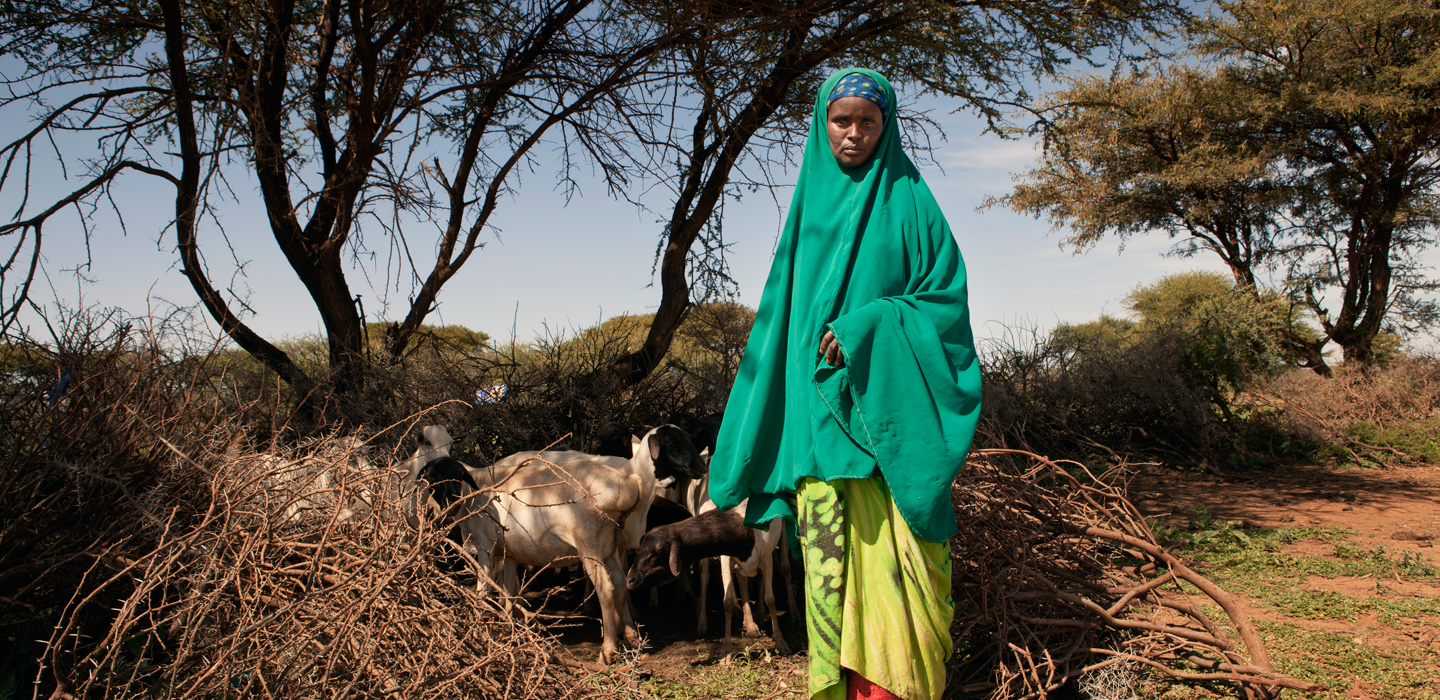How old is the average farmer in today's developing world?
IFAD Asset Request Portlet
Asset Publisher
How old is the average farmer in today's developing world?
Estimated reading time: 4 minutes
As it turns out the short answer to this question is about 34 and not 60 as is often reported.
The long and more nuanced one, however, requires us to answer a couple of other questions first: Who is a farmer? A person who spends some time farming their own land? How much time is enough? What if the person only works on other people's farms for wages? How about individuals who depend on common property resources such as communal grazing lands or fishing grounds? Using individual level data collated for IFAD's RDR 2019 from 13 low-and-middle income countries, as well as data from other sources we can have a better idea on the complex realities on the ground.
Rural development discourse is filled with anecdotes of rural youth leaving agriculture because they find farming 'uncool' and that the farming sector is ageing rapidly (see here and here, for just two examples). Most of these statements are based on data from another era, when detailed activity data from each individual to be able to answer the questions posed above were scarce at best. In the absence of such data, policy makers and researchers relied on data from national statistics offices, or data collected from a small sample of households to glean some information about the "ageing farmer" situation. Most of these previous data sources only collect information at the household level and use the age the household head as a proxy for the age of farmer. That the average age of the African farmer is 60, was (and still is) a commonly repeated finding from that bygone era.
Thanks to the data revolution of the last decade, we are now in a position to have a more nuanced and detailed understanding of the reality of farming. Let's take a look at data from around 767,000 individuals in 13 countries across three regions (SSA, LAC and APR) put together for IFAD's Rural Development Report 2019. When only household heads that spent some (non-zero) time on their own farm are considered, the average age of farmer is 49. When all individuals who spent some time on their own/family farm are considered, however, the average age goes down to 34.
How about those that work for wages on others' farms? The picture is only slightly different, with an overall average age of 43, indicating that younger individuals are more likely to work for wages on the farm. There is some heterogeneity across countries. In Mexico, Peru and Nigeria, for example, the average household head in farming is around 53 years old, but the average is around 45 (and 33 in Nigeria) across all individuals in farming.
What if we modify the definition of farmer to include only those that spend more than 50 per cent of a typical work week in farming? The average age goes up to 50 for household heads, and 41 for all individuals. We can slice and dice the data in a variety ways, but the fact that the average farming household head is around 50 years old and average individual engaged in farming is about 10 years younger remains.
Thirteen countries is a small sample, I bet the age is higher if you had more data?
Using a different data set that covers 38 countries (RuLIS), we get almost exactly the same numbers: average household head's age in agricultural households is 50. Though these data do not contain individual level activity information, when the average age of all adults in these households is used as a proxy, we get 41 years. Looking at multiple years of data for some countries, we see that the trend in these numbers has been mainly stable or increased very slightly over time. Yeboah and Jayne (2018) report that the trend in Africa has been relatively stable or decreasing over time.
Surely the average age of farmer is higher in Africa?
Different regions have different age profiles, and most of the ageing farmer discourse refers to Africa. When we separate the RDR 2019 data by region, an average age of 60 is still nowhere to be seen in today's low-and-middle income countries. Oldest household heads engaged in agriculture are found in LAC at 53 years old, and those in SSA are 49 years old. When all individuals engaged in agriculture are included, these averages go down to 45 and 32, respectively.
Rural youth overall spend 50 per cent or more of all their working time in farming (RDR 2019, Figure 9.6, p. 238). In Africa this number is highest at 65 per cent. Agriculture remains an important income source for rural youth. While structural and rural transformation progresses in Africa, the share of people employed in agriculture will continue to decline as expected. At the same time the number of people working on the farm will continue to rise as the number of rural youth continues to increase. This has changed and is changing the face of agriculture, making it a younger and more dynamic sector. Thanks to the tools and data sources to better understand the realities of farming, we are now in a position to identify and invest in agriculture to turn the sector into one that caters to its new young and dynamic demographic.
Read more about creating opportunities for rural youth in the Rural Development Report 2019
Publication date: 01 July 2019